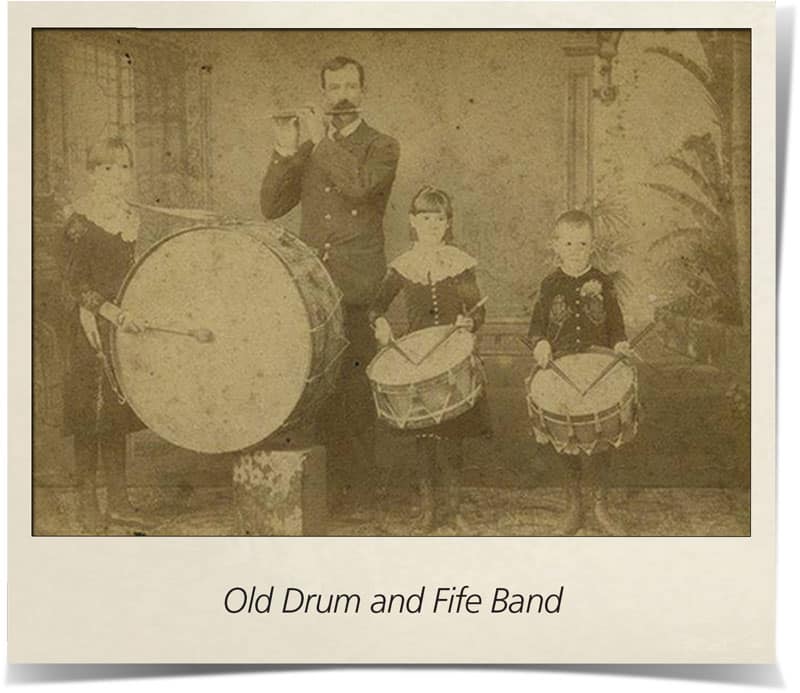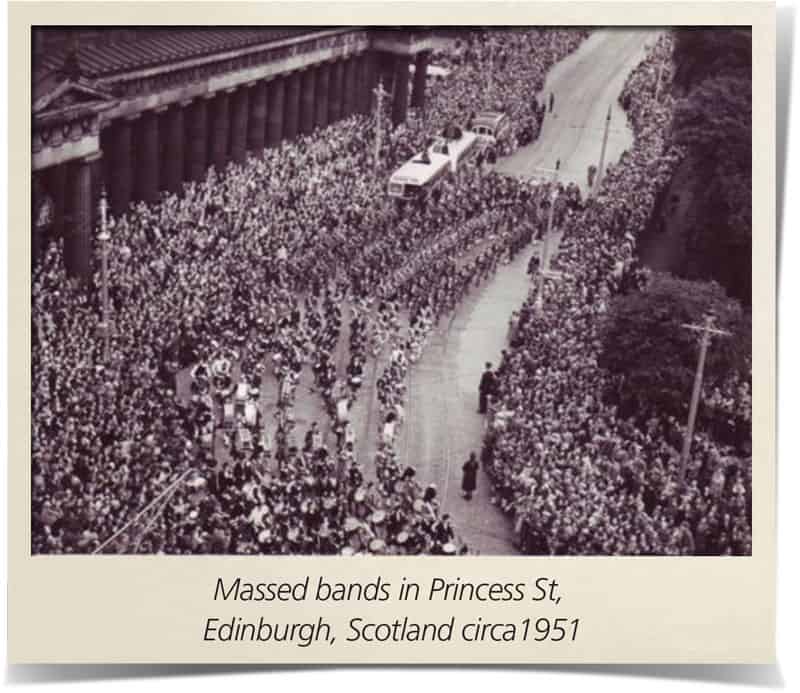- No products in the cart.
Everything you need to know about Pipe Bands
Are you new to the world of Scottish Pipe Bands? Want to learn more about Pipe Bands? Get ready to enter into a lively, social, creative, challenging, supportive and rewarding new universe! As you journey deeper into the world that is Scottish Pipe Bands you will meet inspirational people from all over the world. You will create new friendships that last a lifetime, and develop skills you never even knew you had. Welcome and come on in!
One of the best things about pipe bands is becoming part of the Pipe Band community. It is like extending your family. You will make friends for life, coming across people you possibly never would have crossed paths with otherwise. – Dean J. Hall.
On this page you will find a general overview of information about pipe bands. This information has been collected with the aim of providing an introduction to fast-track your entry into the wonderful world that is Scottish Pipe bands.
[tab: WHAT IS A PIPE BAND? ]
So what is a Scottish Pipe Band Anyway?
You may have seen a pipe band march past you in a parade, performing at a festival, or playing at a wedding or a funeral. Alternatively, you may have seen them in another traditional setting of a Highland Games event or gathering. There are many events that often call for a pipe band to be present, if not the main event. The sound of the pipes and drums travelling on the wind often evokes strong emotions in those who hear them.
The Typical Composition of a Scottish Pipe Band
Pipe bands as we know them today, typically consist of the following:
- Pipers
- Snare Drummers
- Tenor Drummers
- A Bass Drummer (sometimes more than one)
- A Drum Major
The size of a band can vary greatly and members sometimes play or guest play with more than one band. On average, it is widely followed that there should be two Pipers for every one Snare drummer. While the majority of bands have one bass player, two or even three is not unheard of. The tenor drummers are usually one or more per band.
The band and pipers are directed and lead by the Pipe Major of the band. The Drum Corps, which consist of all drummers – snare, tenor and bass – is lead by the Drum Sergeant. The Drum Sergeant works with the Pipe Major to bring out the best in the band as a whole.
See the Roles and Responsibilities tab for more information on the make-up of a pipe band. [tab: A BRIEF HISTORY OF PIPE BANDS ]
A Brief Overview of the History of Pipe Bands
The pipe bands we know today, trace their lineage back to their presence in the military. Here drumming was used to signal tactical movements and to help the soldiers keep time while marching. While drumming has been around since ancient times as a means of communication, the presence of the bagpipes in the military traces their origin back only to the 17th century. (Original source)
It is believed the traditional Scottish Pipe band modelled itself off the Fife and Drums bands which originated in Switzerland in the 15th century.
While the first civilian organisations to start up Pipe Bands were the Police and Fire Brigade.
The music performed by Pipe Bands varies from traditional Scottish and Irish folk tunes and dances, to Western music that has been adapted for pipes and drums. The music is continually evolving, with bands like The Red Hot Chilli Pipers bringing pipe band music into mainstream with adaptations of chart-topping songs and providing the music for the soundtrack of Disney’s movie Brave.
Pipe bands sometimes provide a twist to the traditional music by bringing other instruments such as keyboards, drum kits and string instruments into the mix, usually for special performances and concerts.
Roles and Responsibilities within a Pipe Band
Just like any organised group or activity, Pipe bands require a management structure to be implemented in order to ensure the band is run effectively and efficiently.
The most common model of management structure implemented by Pipe Bands is based upon the hierarchy system used by the military. Other positions within a band are created and allocated on a need by need basis and often reflect positions found in many organisations such as President, Secretary and Treasurer.
- Pipe Major – The Pipe Major is the musical director and guiding leader of the band as a whole and is responsible for the overall direction, performance quality and commitment of the band. The Pipe Major establishes the band’s musical repertoire and decides which events the band will or will not participate in. The Pipe Major acts in order to fulfil the collective desires of the band, whilst upholding and abiding by the bands’ constitution. Being a piper, the Pipe Major is also responsible for the Pipe Corps, ensuring instruments are well looked after, the level of skill required by the band is reached and maintained, and sourcing new players when required. The Pipe Major will work closely with the Leading Drummer to achieve the best ensemble arrangement and performance outcomes.
- Drum Major – The Drum Major is responsible for directing the band when on parade, including the band’s overall appearance which includes proper dress, drill and discipline.Positioned at the head of the band and with the aid of a mace, the Drum Major communicates to the band using a range of both verbal commands and visual gestures. The Drum Major signals the band what time to keep, when to step-off, what to play, when to turn, when to mark-time, when to play and when to stop.In addition, the Drum Major serves as a liaison between the Pipe Major and the band and is responsible for keeping the band organised and structured.
- Drum Sergeant – The Drum Sergeant is responsible for the function and performance of the Drum Corps, which consist of all drummers including snare, tenor and bass. The Drum Sergeant is often also the Lead Snare Drummer, however this is not always the case. Responsibilities of a Drum Sergeant include but are not limited to:
- Communicating with the Pipe Major to maintain consistency with the vision of the band’s direction and purpose
- Driving the progress and motivation of the drum corp including finding and introducing new players when needed
- Insuring all drummers maintain the level of skill required by the band
- Keeping track of instruments and ensuring they are properly looked after and respected.
- Lead Drummer – It is the Lead Drummers’ responsibility to highlight any separation / ensemble issues that he or she notices. The Drum Sergeant is often also the Lead Snare Drummer, however this is not always the case.
- Snare Corps Drummer – The rest of the drummers are referred to as the Snare corps. For the Snare drummers, as corps players it is their responsibility to play as similarly as possible with the lead drummer so that together, the snare corps sound as one.
- Bass Drummer – The Bass Drummer is one of the key time keepers responsible for maintaining a steady tempo throughout the band’s performance. This includes guiding the band accurately through tempo changes from one tune to the next. The Bass also provides an added layer of musicality and interest to a tune through various accenting methods.
- Tenor Corps Drummers – Tenor Drummers add depth in pitch to the band’s performance in a similar way as does the bass. Through the clever use of accents to highlight groove notes. Combined with the bass drummer, they provide a sound bridge between the snare drummers and the pipers. Tenor drummers add the sparkle to a band performance through both sound and visual flourish. While the bass and tenor section can be seen as a third section of the band, they are still part of the drum corp. They are known predominantly as the bass section.
- Piping Corps players – The Pipe Corps players are required to play as one with the Pipe Major. At times some pipe corps players will play different notes to the pipe major. This is often referred to as harmonies or harmony players. This will happen under the direction of the Pipe Major and is intended to provide another layer of colour to the ensemble effect.
Other common roles include:
- President
- Secretary
- Treasurer
- Custodian of Equipment
- Social Secretary
- Publicity Officer
- Members Representatives
[tab:END]




